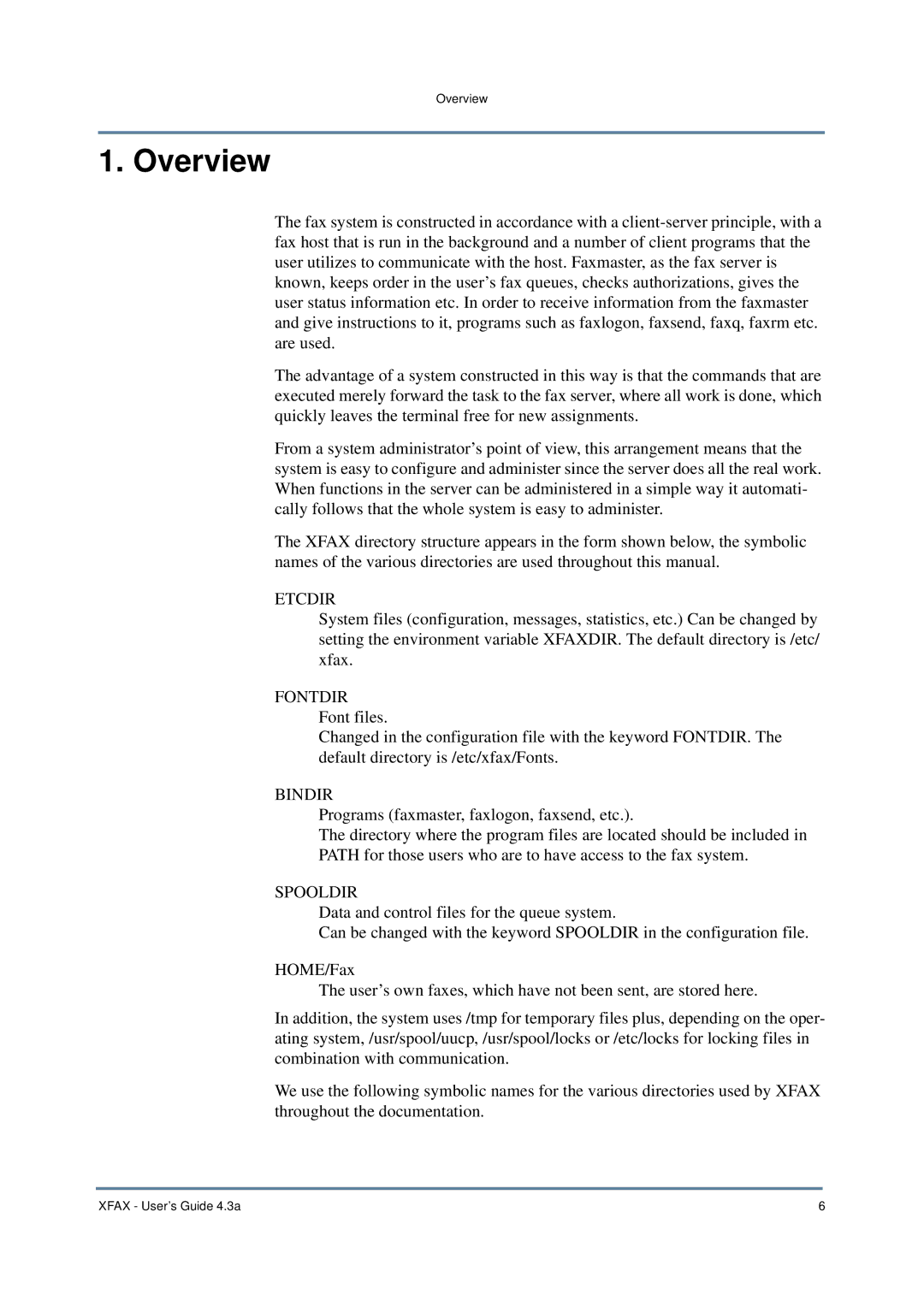
Overview
1. Overview
The fax system is constructed in accordance with a
The advantage of a system constructed in this way is that the commands that are executed merely forward the task to the fax server, where all work is done, which quickly leaves the terminal free for new assignments.
From a system administrator’s point of view, this arrangement means that the system is easy to configure and administer since the server does all the real work. When functions in the server can be administered in a simple way it automati- cally follows that the whole system is easy to administer.
The XFAX directory structure appears in the form shown below, the symbolic names of the various directories are used throughout this manual.
ETCDIR
System files (configuration, messages, statistics, etc.) Can be changed by setting the environment variable XFAXDIR. The default directory is /etc/ xfax.
FONTDIR Font files.
Changed in the configuration file with the keyword FONTDIR. The default directory is /etc/xfax/Fonts.
BINDIR
Programs (faxmaster, faxlogon, faxsend, etc.).
The directory where the program files are located should be included in
PATH for those users who are to have access to the fax system.
SPOOLDIR
Data and control files for the queue system.
Can be changed with the keyword SPOOLDIR in the configuration file.
HOME/Fax
The user’s own faxes, which have not been sent, are stored here.
In addition, the system uses /tmp for temporary files plus, depending on the oper- ating system, /usr/spool/uucp, /usr/spool/locks or /etc/locks for locking files in combination with communication.
We use the following symbolic names for the various directories used by XFAX throughout the documentation.
XFAX - User’s Guide 4.3a | 6 |
